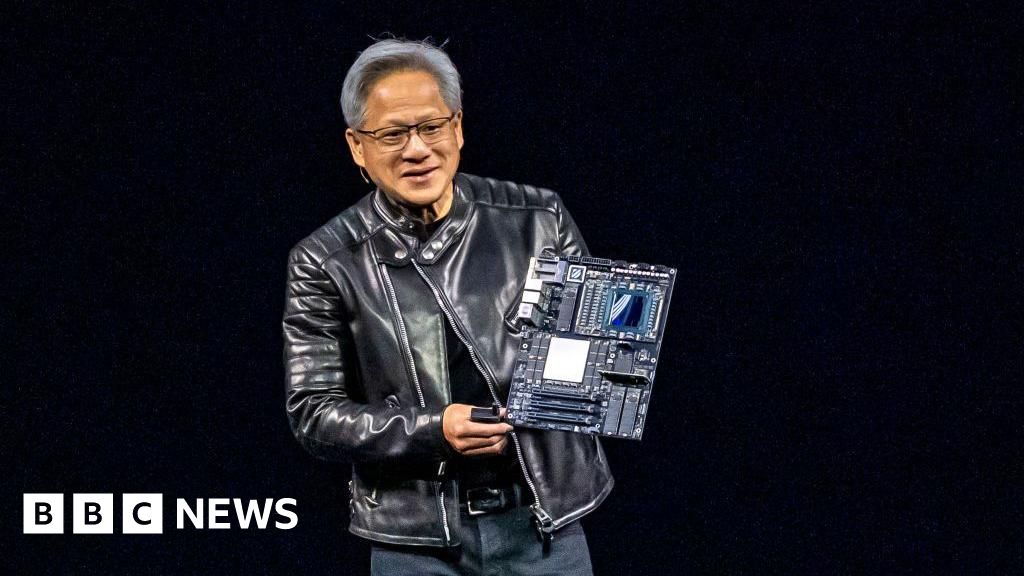ARTICLE AD BOX
By Chris Baraniuk
Technology of Business reporter
Image source, Maxar
Image caption,Satellites can be used to pick out images of individual vehicles and even road markings
Kyle Glen, a project manager in Wales in the UK, has an unusual hobby - tracking Russian troop movements.
Mr Glen is co-founder of Conflict News, an account on social media platform, Twitter, with more than 400,000 followers. It collates and shares publicly-available photos and videos of conflict, gathered from a variety of online sources.
Since early last year, he and others among what's known as the "open source intelligence community" have been closely watching Russian military activity in and around Ukraine.
He bought and shared from the account satellite images from online service SkyWatch, which reportedly showed the massing of vehicles along the Russia-Ukraine border over many months - and then, the moment when the invasion began.
"We watched it go from nothing, to quite significant build-up and then it was empty again the day before the invasion," he recalls, referring to images from one apparent camp on the border.
"I don't get any money from this at all," says Mr Glen. "It's completely a hobby, voluntary, whatever you want to call it."
Media coverage of the war in Ukraine, which started almost a month ago, has included, arguably to an unprecedented extent, content shared via social media. This has included satellite photos that document troop movements and shocking damage to cities.
In recent days, pictures snapped by satellites in orbit have captured images which appear to show destroyed Russian helicopters, extensive damage to a shopping centre and residential districts in Mariupol, and a civilian tanker vessel on fire in the Black Sea.
Image source, Maxar
Image caption,Maxar satellite images appear to show a long Russian convoy of military vehicles approaching Kyiv, Ukraine's capital
Privately-owned companies that launch and operate their own satellites - such as Planet and Maxar - have distributed many satellite images of the conflict zone.
The proliferation of these images means members of the public and military analysts alike can try to gauge the situation on the ground in Ukraine and the progress of Russia's invading armed forces from thousands of miles away.
Mr Glen says that while satellite imagery has been available online during previous conflicts, including the war in Syria, the volume of this material was "a drop in the bucket", compared to what has come out of Ukraine in little more than a fortnight.
So, what's changed? While government and intelligence agency satellites gather classified, secret information, commercial firms have long been able to sell their own, unclassified, imagery. And now, this material is being made easily accessible online.
A variety of businesses and other organisations rely on satellite images to track everything from wildfires to crops and the movement of ships. This means there has been a big rise in the number of commercial satellites in orbit which has significantly increased data sharing possibilities says Chris Quilty, partner at Quilty Analytics.
"There are more eyes in the sky," as he puts it.
Image source, Arianespace
Image caption,There has been a big rise in satellite launches over the last 20 years
Members of the public can purchase high-quality pictures gathered by satellite for as little as $10 (£7.60) per sq km.
The resolution of these images is sometimes very high, capturing tiny details measuring down to 30cm by 30cm at ground level. This granularity makes it possible to identify vehicles and road markings.
Operators can also program satellites to monitor specific locations multiple times every 24 hours, picking up even small changes almost as soon as they happen.
As the technology has advanced, the public's willingness to engage with satellite images has really taken off, Mr Quilty adds: "The fundamental capability hasn't changed dramatically, it's the willingness and manner in which users are ingesting and using the data that has changed."
This even extends to sophisticated, synthetic aperture radar (SAR) imagery, which is often more difficult to interpret than a picture taken with an optical lens.
Satellites can even capture SAR images through cloud cover. The resulting black-and-white pictures might show vehicles, including tanks, for instance, as rows of bright dots.
Mr Glen says these types of image have helped him, and people like him, to track the beginning of the Ukraine invasion.
Image source, Georgetown University
Image caption,Rita Konaev says widespread access to satellite images has helped combat disinformation about the Ukraine conflict.
Rita Konaev, associate director of analysis at Georgetown University's Center for Security and Emerging Technology, says satellite imagery "has been an aspect of modern conflict for 10 to 15 years now, but the scale [this time] is different and the accessibility is different," she adds, suggesting satellite imagery has helped to challenge disinformation about the invasion.
"The architecture of European cities like Kyiv is very familiar in the Western world," adds Dr Konaev. This familiarity, she suggests, may have influenced the response in the West to the invasion - in contrast with wars in the Middle East and further afield.
Mr Glen says followers of Conflict News and similar social media accounts, can verify satellite imagery by checking online sources themselves. "You can present the evidence to a wider audience in as unbiased a way as possible and let people to come to their own conclusions," he says.
However, he also acknowledges that he and others like him in the so-called "open source intelligence community" make judgements about what to share and when.
For example, he identifies more closely with the Ukrainians than the Russians in this conflict, he says, and therefore would not intentionally publish any information about Ukrainian military movements, to avoid accidentally compromising their safety.
Some private companies are also sharing sophisticated images captured from orbit - in near real-time - directly with the Ukrainian military. Canadian firm MDA is one such example.
Dr Konaev argues that satellite images offer a unique overview - literally - of events unfolding thousands of miles away, unlike any other media, which may she says explain some of the heightened interest in these pictures.
Image source, Getty Images
Image caption,A tank driver flies the Ukraine flag
"In some ways, I think the imagery from a distance, gives even more of a perspective of the scale of the destruction and the devastation," she adds. "It's more than just people's individual lives, it's [whole] communities."
But there could be some significant consequences of making such detailed imagery so widely available.
Although militaries have vast intelligence resources that they rely on beyond social media, there is no knowing how satellite images of troop movements shared on Twitter, or Facebook, could influence operational decisions on the ground.
"There are real, potential life or death consequences," says Dr Konaev.
Mr Glen has thought about this possibility but will likely never know whether an image he shares ultimately leads to a fatal attack or confrontation on a frontline.
"I wouldn't say it makes me hesitate, as such, but it's something I'm aware is a possibility," he says. "And I've come to terms with it."

 3 years ago
62
3 years ago
62








 English (US) ·
English (US) ·